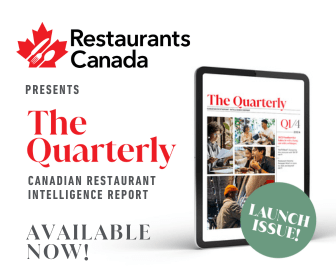Commercial foodservice sales fell to 4.2% growth in 2015 following a 5.5% increase in 2014. Overall annual foodservice sales surpassed $60 billion in 2015. The year was a mixed bag, with some provinces doing much better than others. Here’s how each of them fared:
1) Newfoundland & Labrador’s restaurant industry was the biggest winner in 2015. Not only did it post the strongest growth (8.1%), but it happened when the province’s economy was contracting. Most of the gains were by caterers, with the rest of the industry experiencing modest growth.
2) British Columbia. What can be said about a province that continues to post sizable gains year after year? Sales jumped by a healthy 6.7% in 2015 following a strong 8.2% increase in 2014. Growth is being driven by unit expansion, a growing population, and the wealth effect from rising housing prices.
3) Similarly, Ontario’s foodservice industry continues to grow, with sales expanding by 5.6% in 2015.
4) After years of sluggish gains and weak spending, New Brunswick’s foodservice industry rebounded in 2015. Pent-up consumer demand lifted total sales by 6.3%, the province’s strongest gain since 2008.
5) Prince Edward Island saw a solid rebound in spending (5.8%) in 2015. Over the past 16 years, sales in P.E.I. have averaged just 0.9% annually. Most of the gains in 2015 were at quick-service restaurants, which grew by a healthy 10% compared to just 2% growth at full-service restaurants. A strong tourism season due to a low Canadian dollar could lift full-service restaurant business in 2016.
6) Manitoba’s restaurant industry moderated to 4.3% growth in 2015 following several years of solid gains. While caterers posted double-digit gains, other segments struggled. Quick-service restaurants had their weakest year since 2007; full-service restaurants posted only modest gains; and sales at drinking places declined. Manitoba posted the third-strongest economic growth in the country, but it didn’t translate into a strong foodservice sales performance.
7) Although foodservice sales in Nova Scotia rose by 4.7% in 2015, most of the increase was inflationary as menu prices increased by 4.1%, the highest increase in the country. (The national average was 2.8%.) As a result, real sales grew by just 0.6%.
8) The decline in commodity prices restrained annual foodservice sales in Saskatchewan to 2.9% growth in 2015. This compares to average annual growth of 6.5% over the previous eight years. The province’s economy should improve in 2016, which will help boost foodservice spending, especially at full-service restaurants.
9) Quebec’s restaurant industry stumbled for the third consecutive year in 2015 (1.6% growth) despite rising employment and higher disposable income. A decline in units and weak consumer spending led to flat sales at full-service restaurants and an 8.0% drop in spending at drinking places. While the economy is forecast to improve in 2016, foodservice sales in the long term will be restrained by an aging population.
10) It shouldn’t be a surprise that Alberta struggled the most in 2015. With the economy in recession and thousands of layoffs in the oil and gas sector, spending fell at full-service restaurants, caterers and drinking places. The one saving grace was quick-service restaurants, where sales rose by 5.4%. Nevertheless, total commercial foodservice sales rose by just 0.9% in 2015, the worst performance since 2009. While operators in Alberta may be happy to see the end of 2015, 2016 may not bring much relief as the economy continues to struggle.


